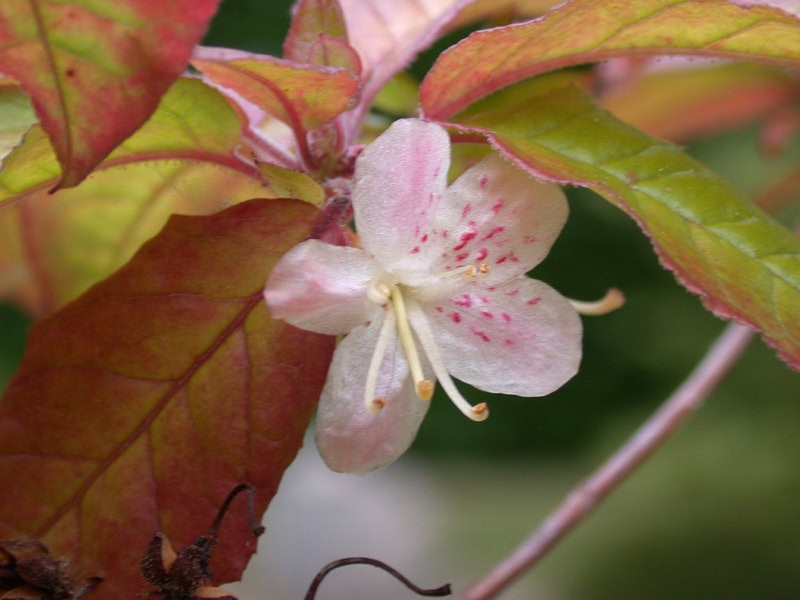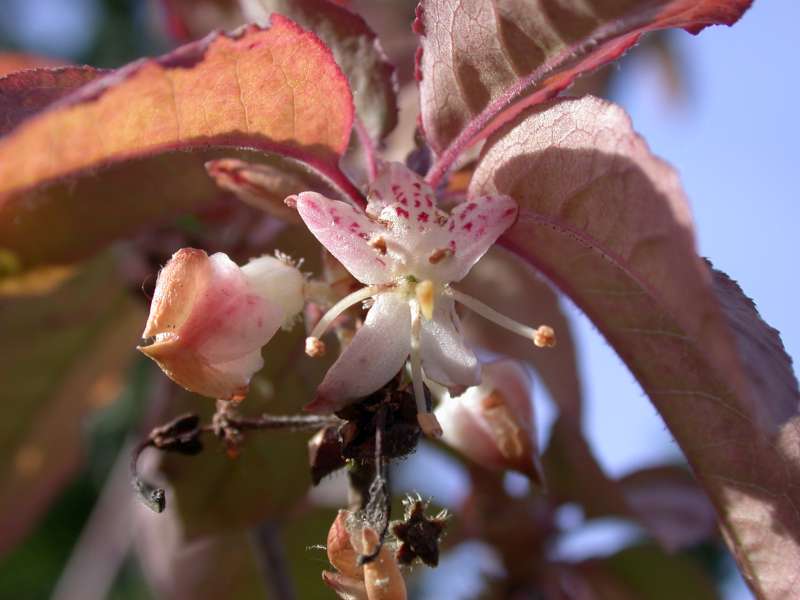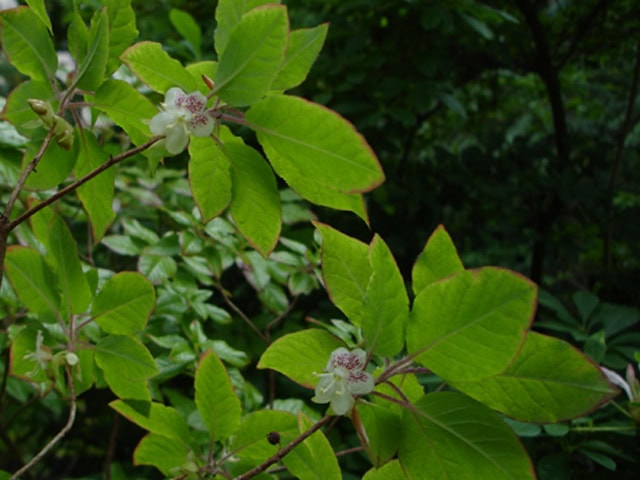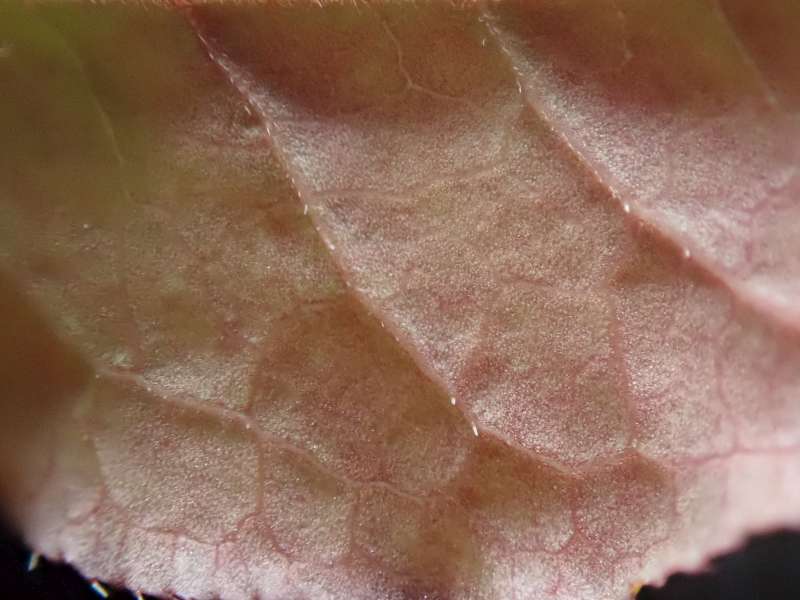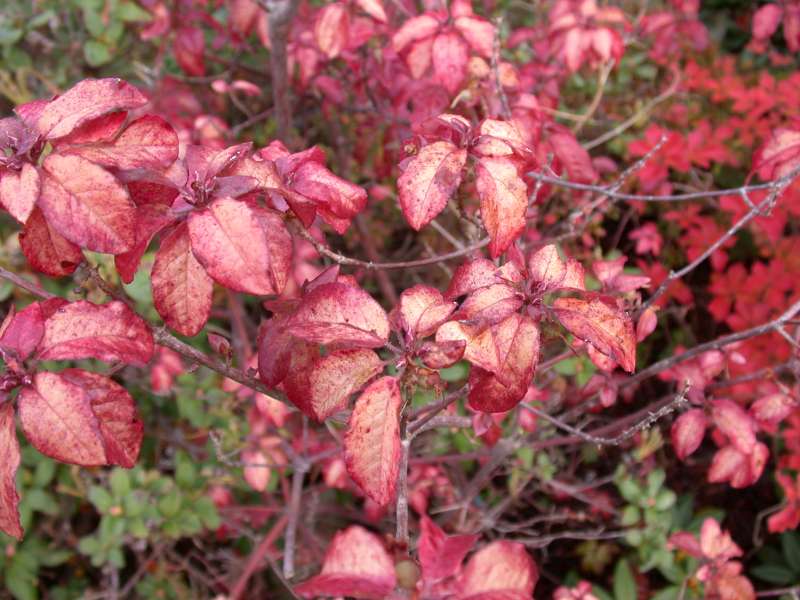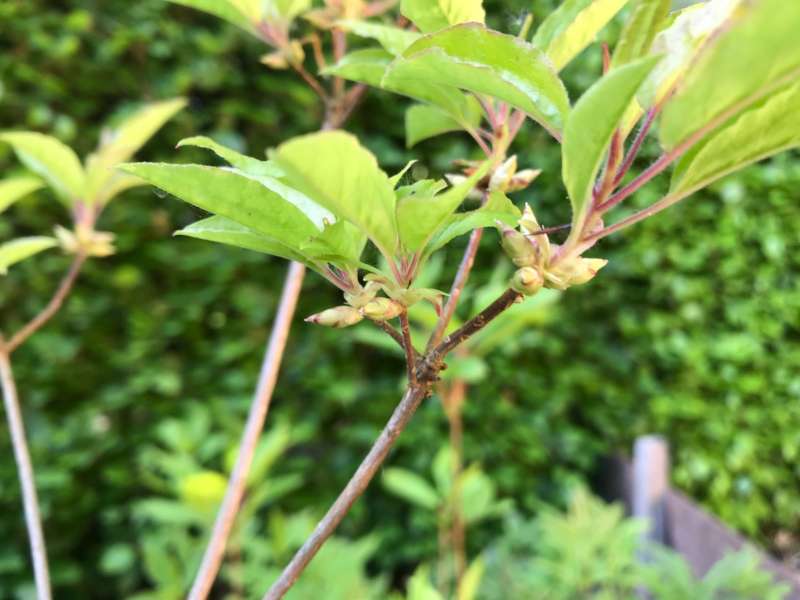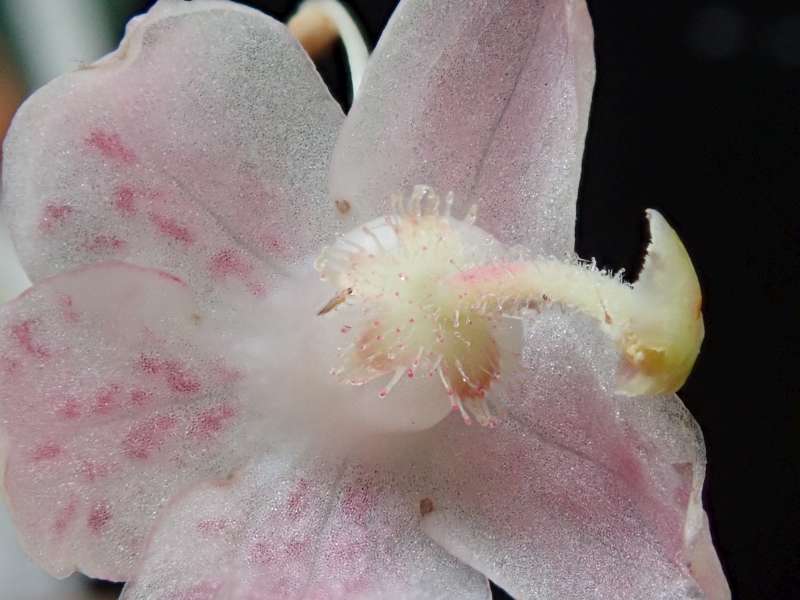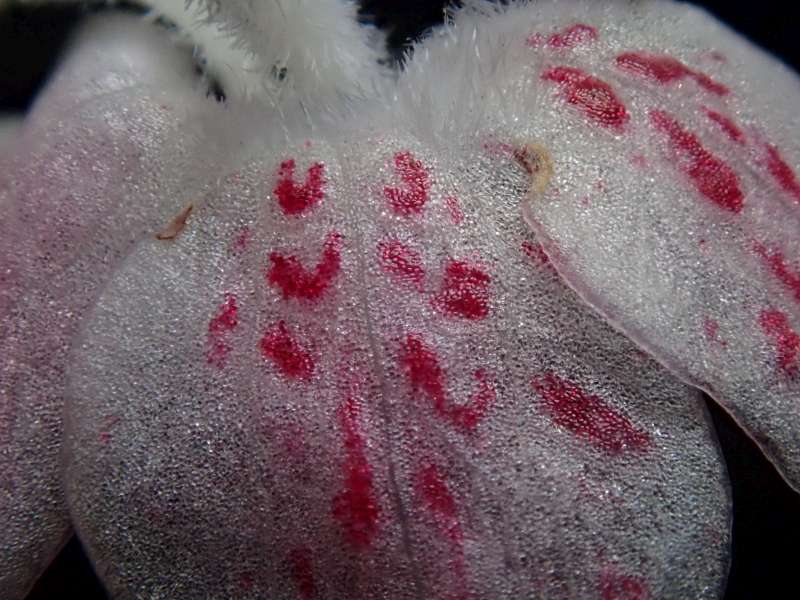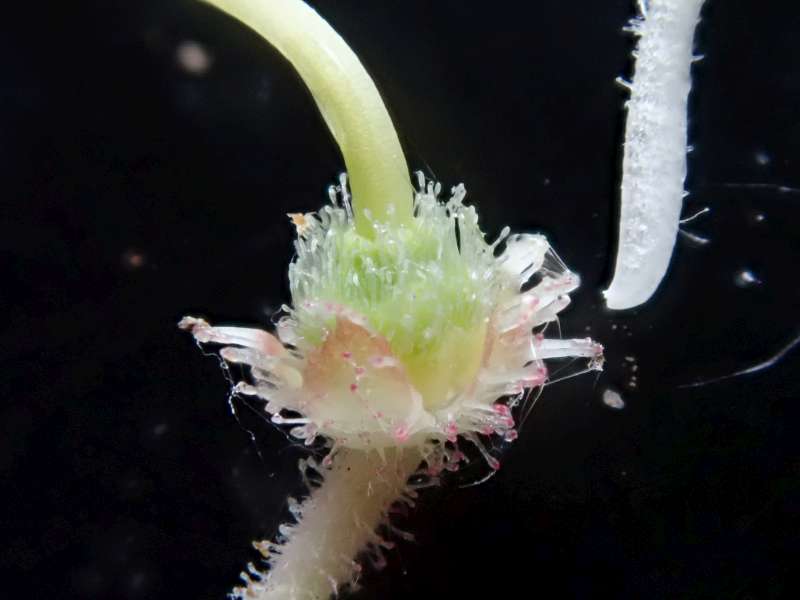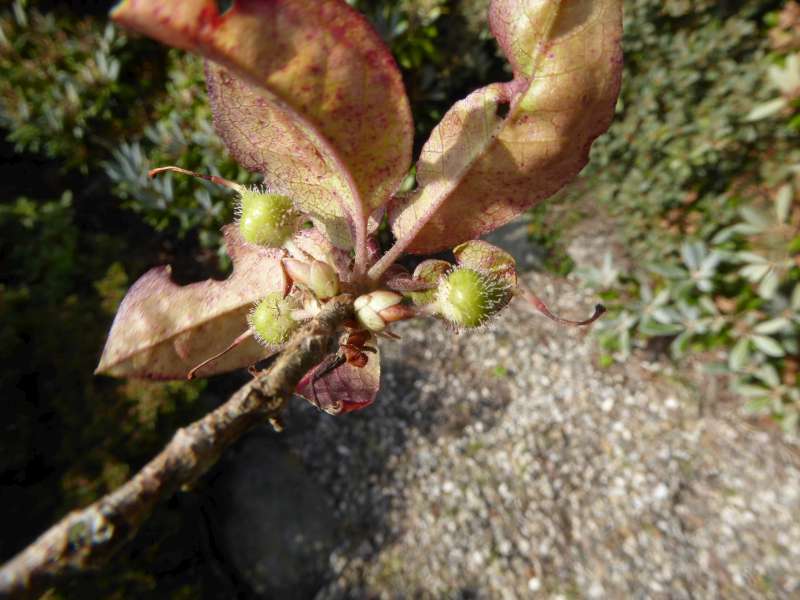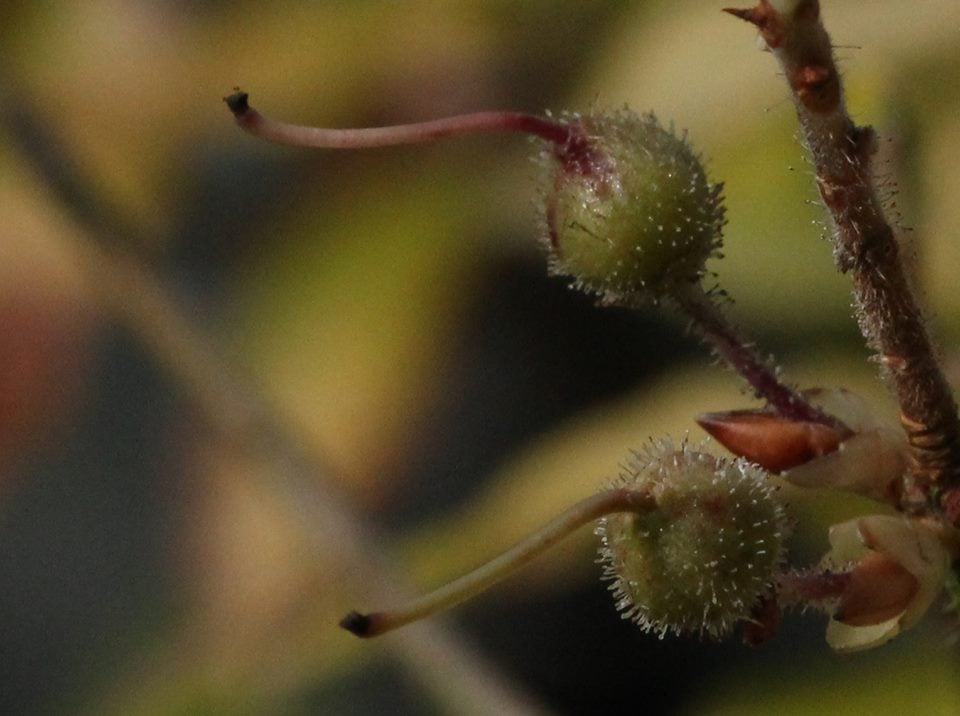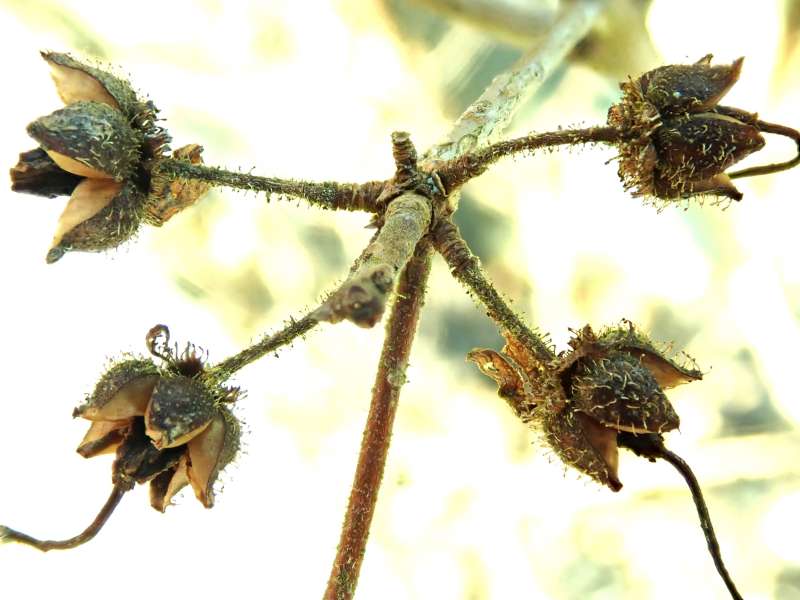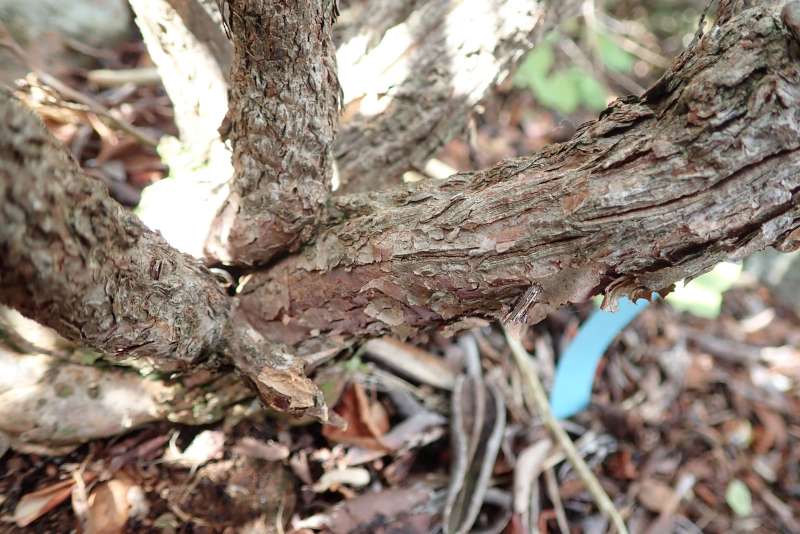Rhododendron semibarbatum
Billeder af Rhododendron semibarbatum
Beskrivelse
R. semibarbatum (Mumeazalea). Opret og bred løvfældende busk med fantastiske røde efterårsfarver. De små og tynde, skinnende mørkegrønne blade er normalt behåret. Den er helt forskellig fra alle andre arter i slægten da den lille hvide blomst har røde pletter og hænge under bladene. Blomstrer sent i juni, men det overses. Vildtvoksende i Japan, hvor det er fundet i bjergskove.
Hans Eiberg
● R. semibarbatum frø. Foto: Hans Eiberg
ARS
Kew’s Herbarium
RBGE Herbarium; R. semibarbatum (data?)
https://www.treesandshrubsonline.org/articles/rhododendron/rhododendron-semibarbatum/Trees and Shrubs Online; R. semibarbatum Maxim.
Deciduous shrub, to 2(–3) m; young shoots puberulous and with gland-tipped hairs, leaves turning wine-red in autumn, clustered at the end of short-growing branches, 2–6 × 1–2.6 cm, elliptic or ovate, apex apiculate to obtuse, base rounded or cuneate, margin serrulate and sometimes ciliate, lower surface glabrous except for the puberulous midrib and ciliate veins. Flowers borne laterally, below the vegetative buds, solitary; calyx c.2 mm, lobes rounded; corolla white, with a pink flush and rose-purple flecks, rotate, with a short wide tube and spreading lobes, c.20 mm across; stamens 5, strongly dimorphic; ovary setose and densely glandular, style glabrous. Flowering June. Royal Horticultural Society (1997)
Distribution Japan Honshu, Shikoku, Kyushu
Habitat Mountains
RHS Hardiness Rating H5
Conservation status Least concern (LC)
Taxonomic note A distinctive species on account of its strongly dimorphic stamens. The arrangement of the one-flowered inflorescence is similar to that of Subgen. Azaleastrum but it is very diffeent in other characters. Royal Horticultural Society (1997)
A deciduous shrub 2 to 8 ft high with downy and hairy, glandular young shoots. Leaves oval to ovate, very variable in size from 3⁄4 to 2 in. long, 3⁄8 to 1 in. wide, bluntish at the apex, rounded or nearly so at the base, minutely toothed on the margins and slightly bristly on the midrib and veins beneath; stalk up to 3⁄8 in long, downy and bristly. Flowers solitary, produced from lateral buds near the ends of the branchlets (the terminal bud is a growth-bud); pedicels 1⁄8 in. or slightly more long, glandular and bristly, like the short calyx. Corolla rotate with a short tube and five rounded, spreading lobes, white or yellowish white, freely dotted with red at the base, about 3⁄4 in. across. Stamens five, very unequal, the three lower ones glabrous or nearly so, the other two much shorter and nearly covered with brisdes. Ovary globose, bristly in the upper part; style glabrous. Bot. Mag., t. 9147. (s. Semibarbatum)
Native of central and southern Japan; described by Maximowicz from a specimen collected by Tschonoski; it was introduced by him to St Petersburg, but did not reach Britain until Wilson sent seeds in 1914, which were distributed by the Arnold Arboretum. As a garden plant it has little to recommend it, but it is of considerable botanical interest as a member of the Azaleastrum group (see p. 588).

